
 Home Home

 Call for Papers Call for Papers
 Committee Committee
 Submission Submission  Instructions for Authors Instructions for Authors  Important Dates Important Dates
 Sponsors Sponsors  Program Program
 Keynotes and Panel Keynotes and Panel

 Tutorials Tutorials
 Registration Registration
 Social Events Social Events
 Hotel Arrangement Hotel Arrangement
 Conference Venue Conference Venue
 About Trondheim About Trondheim
 Previous ISWCS Previous ISWCS

|
Keynote Speakers
| Andreas F. Molisch |
Abstract: Wireless multiple-input -
multiple-output (MIMO) systems, defined as systems that have multiple
antenna elements at both link ends, can greatly enhance the robustness
and spectral efficiency of wireless communications. While most of the
literature has concentrated on signal processing and space-time coding
for MIMO, the fundamental performance limits are determined by the
propagation channel and the way it is "excited" and "sampled" by the
transmit and receive
antenna arrays, respectively. In this talk, we first give an overview
of array design, in particular, the question of how close we can space
antennas. Subsequently, we describe typical propagation channels and
how they impact system
capacity; we also consider ways to describe the interaction between
antennas and channels. Throughout the talk, we will show how the
antenna and channel properties impact system capacity, diversity, and
other system performance parameters.
|
 Dr. Andy Molisch Dr. Andy Molisch
is a
Distinguished Member of Technical Staff at Mitsubishi Electric Research
Labs, and also Professor and Chairholder for Radio Systems at the
Department of Electro- and Information Technology at Lund University,
Sweden. His areas of interest are wireless propagation, MIMO, UWB, and
cooperative communications. He has authored four books, eleven
bookchapters, some 100 journal papers, and numerous conference
contributions, as well as 60 patents. He is active in
standardization and has been chairman of several standardization
organizations: IEEE 802.15.3a, IEEE 802.15.4a (chairman of channel
modeling group), IEEE 802.11n, Multiband-OFDM alliance (chairman of
scalability group), COST273 (chairman of the channel modeling group),
and chairman of Commission C of URSI (International Union of Radio
Science). Dr. Molisch is a Fellow of the IEEE, an IEEE Distinguished
Lecturer, and recipient of several awards.
|
|
Mario Gerla
|
Title: Peer
to Peer Urban Sensing
from Mobile Platforms
Abstract: There has been growing
interest in urban
surveillance using vehicles that monitor the environment, classify the
events,
e.g., license plate reading, and exchange metadata with neighbors in a
peer-to-peer fashion. The idea is to create a totally distributed index
of all
the events, to be accessed by users. For instance, the Department of
Transportation extracts traffic congestion statistics; the Department
of Health
monitors pollutants, and; the Police carries out forensic
investigations.
Mobile, vehicular sensing differs significantly from fixed (wireless)
sensing.
The vehicles have no strict limits on battery life, processing power
and
storage capabilities. Moreover they can generate an enormous volume of
data,
making current sensor harvesting solutions inadequate. The talk
describes
MobEyes, a middleware solution that diffuses data summaries to create a
distributed index of the massive sensed data base. We discuss the
challenges of
designing and maintain such a system, from information dissemination to
harvesting, routing and security.
|
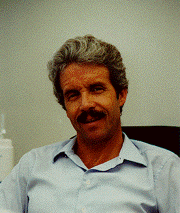 Dr.
Mario Gerla Dr.
Mario Gerla received a graduate degree in engineering from the
Politecnico di Milano in 1966, and the M.S. and Ph.D. degrees in
engineering from UCLA in 1970 and 1973. He became IEEE Fellow in 2002.
After working for Network Analysis Corporation, New York, from 1973 to
1976, he joined the Faculty of the Computer Science Department at UCLA
where he is now Professor. His research interests cover distributed
computer communication systems and wireless networks. He has designed
and implemented various network protocols (channel access, clustering,
routing and transport) under DARPA and NSF grants. Currently he is
leading the ONR MINUTEMAN project at UCLA, with focus on robust,
scalable network architectures for unmanned intelligent agents in
defense and homeland security scenarios. He also conducts research on
scalable TCP transport for the Next Generation Internet.
|
|
| David Gesbert |
Title: Adaptation,
coordination and distributed
resource allocation in interference-limited wireless networks
Abstract: A
sensible design of wireless networks involves striking a good balance
between
an aggressive reuse of the spectral resource throughout the network and
managing the resulting co-channel interference. Traditionally this
problem has
been tackled using a "dive and conquer" approach. The latter consists
of deploying the network with a static or semi-dynamic pattern of
resource reutilization.
The chosen reuse factor, while sacrificing a substantial amount of
efficiency,
brings the interference to a tolerable level. The resource can then be
managed
in each cell so as to optimize the per cell capacity, using advanced
air
interface design.
In
this talk we focus our attention on the overall network capacity as a
measure
of system performance. We consider the problem of resource allocation
and
adaptive transmission in multicell scenarios. As a key instance, the
problem of
joint scheduling and power control simultaneously in multiple
transmit-receive
links, which employ capacity-achieving adaptive codes, is studied. In
principle, the solution of such an optimization hinges on tough issues
such as
the computational complexity and the requirement for heavy
receiver-to-transmitter feedback and, for cellular networks,
cell-to-cell
channel state information (CSI) signaling. We give asymptotic
properties
pertaining to rate-maximizing power control and scheduling in multicell
networks. We then present some promising leads for substantial
complexity and
signaling reduction via the use of newly developed distributed and game
theoretic techniques.
|
 Dr.
David
Gesbert Dr.
David
Gesbert is Professor in the Mobile
Communications Dept., Eurecom Institute, France. He obtained the
Ph.D
degree from Ecole Nationale Superieure des Telecommunications, France,
in 1997. From 1997 to 1999 he has been a research fellow at the
Smart
Antenna Research Group of the Information Systems Laboratory, Stanford University. In 1999, he was a
founding
engineer of Iospan Wireless Inc, San Jose, Ca.,a startup company
pioneering MIMO-OFDM
(now Intel). Between 2001 and 2003 he has been with the
Department of
Informatics, University
of Oslo. D.
Gesbert has
published about 110 papers and several patents all in the area of
signal
processing, communications, and wireless networks, three of the
papers receiving best paper awards. D. Gesbert was a co-editor of
several special issues on wireless networks and communications
theory,
for IEEE JSAC (2003, 2007), EURASIP JASP (2004, 2007),
Wireless
Communications Magazine (2006). He is a member of the IEEE
Signal Processing for Communications Technical Committee. He
co-authored the book "Space time wireless communications:
From
parameter estimation to MIMO systems", Cambridge Press,
2006. He
was
co-organizer, with Prof. Dirk Slock, of the IEEE Workshop on
Signal Processing Advances in Wireless Communications, 2006 ( Cannes, France).
|
|
Hans Martin Ritt
|
Title: Development
of complex wireless systems requires new development technologies
Abstract: Developers of
signal processing and communication systems are
facing a constantly increasing demand for more complex and powerful
products
that need to be developed in very short time frames. Some industry
watchers
have predicted an upcoming "productivity crisis" for the
implementation of signal processing and other embedded systems in
programmable
logic or software, respectively. However, they often take a crisis view
based
on an incorrect measurement: the number of lines of code that an
engineer can
write in a day. This measure does not take into account the level of
programming abstraction. Based on the technological evolution of the
hardware
combined with new ways to develop software, there have been always
architectural and algorithmic improvements that create breakthrough
performance
advances. Each of these advances was made possible by new development
tools
that addressed the critical problems of the day.
Mastering
the design of computationally intensive signal
processing systems calls for a development environment that lets
designers
accurately model and simulate the behavior of an entire system,
including the
interaction of hardware and software subsystems as well as the
environment in
which the system must operate. Traditional procedural programming and
hardware
description languages and incremental extensions to those languages are
not
appropriate for modeling this level of algorithmic complexity. For
decades, standard
specifications, textbooks and engineers' whiteboards have used block
diagrams
to specify signal flow, timing and system architecture. It is not
surprising,
therefore, that graphical modeling tools are the natural way to
specify, design
and verify such signal processing systems.
|
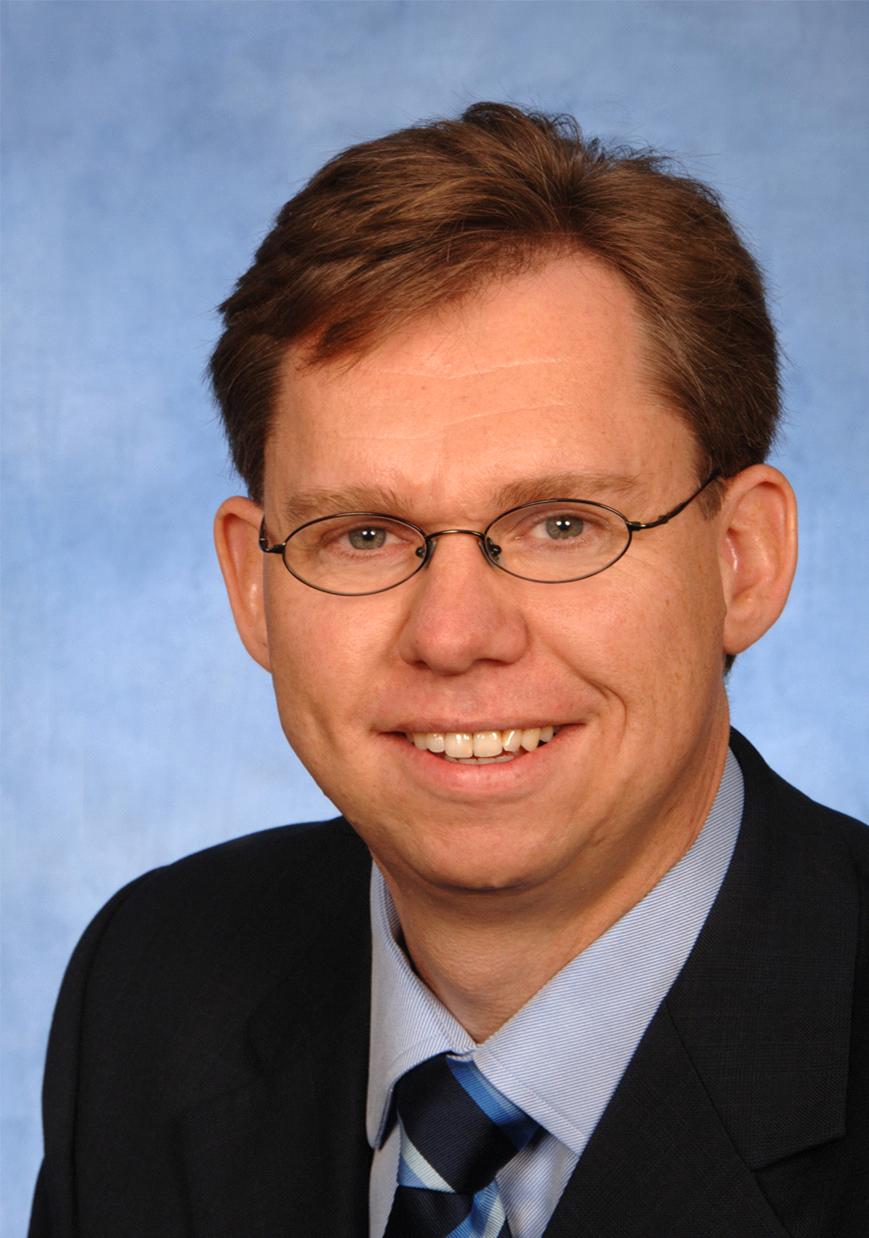 Dr.
Hans Martin Ritt
has received his PhD in
control engineering from the University of Technology
Aachen
focussing on the implementation of advanced control algorithms using
automatic
code generation tools. Holding the position of a solution manager at
Ericsson
he contributed to the introduction of the 3rd generation communication
technology UMTS, starting the operation of one of the first networks in
Germany.
At The
MathWorks he is holding the position of a Principal Application
Engineer and a
team leader covering a broad spectrum of applications based on the
Model-Based
design approach starting from the design of control systems in the
automotive
industry to signal processing systems in the communication industry. He
manages
a team of application engineers with more specific focus. Dr.
Hans Martin Ritt
has received his PhD in
control engineering from the University of Technology
Aachen
focussing on the implementation of advanced control algorithms using
automatic
code generation tools. Holding the position of a solution manager at
Ericsson
he contributed to the introduction of the 3rd generation communication
technology UMTS, starting the operation of one of the first networks in
Germany.
At The
MathWorks he is holding the position of a Principal Application
Engineer and a
team leader covering a broad spectrum of applications based on the
Model-Based
design approach starting from the design of control systems in the
automotive
industry to signal processing systems in the communication industry. He
manages
a team of application engineers with more specific focus. |
Panel theme: Wireless
Future
| Boon Sain Yeo (Panel Moderator) |
SensiMesh Pte
Ltd,
Singapore
|
 Boon Sain Yeo
received the B.Eng and Ph.D. degrees in Electrical and Electronics
Engineering from University of Glasgow and Imperial College of Science
and Technology, respectively. He has been with the Institute for
Infocomm Research (I2R, formerly known as Centre for Wireless
Communications, NUS and Institute for Communications Research), since
1998. From 2004 to 2005, he was appointed head of Wireless
Sensor
Networks Laboratory in the Networking Department. Since 2005, he has
been seconded to lead the technology division of Wavex Technologies,
focusing on wireless development and RFID, and to setup Wavex
Innovations, the R&D arm of Wavex Technologies, under a government
initiative to help technologically upgrade the small medium enterprise
in Singapore. He has participated actively and led a team of hardware
engineers in the deployment of the 2nd generation RFID systems to the
22 Regional and Community Libraries for the National Library Board of
Singapore (NLB). He was also the project manager for the RFID
Smart-Shelf project, which he initiated at I2R. He is also an adjunct
Assistant Professor in NUS. His research interests are in technologies
relating to wireless systems and network, and operational approaches to
optimize telecommunication systems. He has been actively participating
in numerous conferences serving as TPC chair, steering committee chair
and General co-chair in more than 10 conferences the recent 3-4 years.
He is also currently serving as an editorial board member for several
reputable journals. Boon Sain Yeo
received the B.Eng and Ph.D. degrees in Electrical and Electronics
Engineering from University of Glasgow and Imperial College of Science
and Technology, respectively. He has been with the Institute for
Infocomm Research (I2R, formerly known as Centre for Wireless
Communications, NUS and Institute for Communications Research), since
1998. From 2004 to 2005, he was appointed head of Wireless
Sensor
Networks Laboratory in the Networking Department. Since 2005, he has
been seconded to lead the technology division of Wavex Technologies,
focusing on wireless development and RFID, and to setup Wavex
Innovations, the R&D arm of Wavex Technologies, under a government
initiative to help technologically upgrade the small medium enterprise
in Singapore. He has participated actively and led a team of hardware
engineers in the deployment of the 2nd generation RFID systems to the
22 Regional and Community Libraries for the National Library Board of
Singapore (NLB). He was also the project manager for the RFID
Smart-Shelf project, which he initiated at I2R. He is also an adjunct
Assistant Professor in NUS. His research interests are in technologies
relating to wireless systems and network, and operational approaches to
optimize telecommunication systems. He has been actively participating
in numerous conferences serving as TPC chair, steering committee chair
and General co-chair in more than 10 conferences the recent 3-4 years.
He is also currently serving as an editorial board member for several
reputable journals.
|
|
| Richard Savage |
Director Business
Development
Qualcomm Europe |
 Richard
Savage is Director Business Development at Qualcomm Europe,
where he is responsible for Scandinavia, Baltic States and Holland.
Prior to joining Qualcomm, Richard has held similar positions for the
last nine years at Ericsson Telecom AB, and Appload AB. Richard has
lived in Sweden since 1996, prior to moving to Sweden he lived and
worked in France with several companies including Microsoft,
MicroWarehouse and Azlan. Richard
Savage is Director Business Development at Qualcomm Europe,
where he is responsible for Scandinavia, Baltic States and Holland.
Prior to joining Qualcomm, Richard has held similar positions for the
last nine years at Ericsson Telecom AB, and Appload AB. Richard has
lived in Sweden since 1996, prior to moving to Sweden he lived and
worked in France with several companies including Microsoft,
MicroWarehouse and Azlan. |
|
| Stein Hansen |
Vice President,
Group Technology
Telenor ASA
Norway |
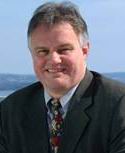 Stein started his career
in Telenor R&D, and had central international positions from the
early beginning in the development of GSM as well as UMTS. Stein has
had a number of operational Top Management positions working for mobile
operators, including Technical Director of NetCom (Norway), Managing
Director of Telenor Mobilnett (Norway), Mobile Planning &
Implementation Director of VIAG Interkom (Germany) as well as Chief
Operating Officer of DiGi (Malaysia). He is currently at Telenor HQ as
Vice President, Group Technology. He has had several Board of Director
positions within the Telenor group through his career. Stein Hansen
holds an M.Sc. degree in telecommunications from the Norwegian
Institute of Technology, University of Trondheim. Stein started his career
in Telenor R&D, and had central international positions from the
early beginning in the development of GSM as well as UMTS. Stein has
had a number of operational Top Management positions working for mobile
operators, including Technical Director of NetCom (Norway), Managing
Director of Telenor Mobilnett (Norway), Mobile Planning &
Implementation Director of VIAG Interkom (Germany) as well as Chief
Operating Officer of DiGi (Malaysia). He is currently at Telenor HQ as
Vice President, Group Technology. He has had several Board of Director
positions within the Telenor group through his career. Stein Hansen
holds an M.Sc. degree in telecommunications from the Norwegian
Institute of Technology, University of Trondheim.
Stein is one of the pioneers in the field of GSM
and UMTS, and has been in the mobile communications field since 1984.
He was Telenor’s representative in the GSM Permanent Nucleus
(France)
from 1986-1988. He was later also the first Chairman of the ETSI
committee responsible for developing UMTS in the early years from
1991-1993. Stein is currently a Board Member of the GSM Association
(GSMA) and Chairman of its Executive Management Committee (EMC) since
Jan 2006. Stein is also a Board member of the Open Mobile Terminal
Platform (OMTP) group since 2005.
|
|
| Jarle Boe |
Texas Instrument
(Oslo)
Norway |
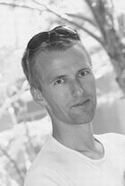 Jarle Boe Jarle Boe has more than 10
years experience from the wired and wireless semiconductor industry. He
is currently working for Texas Instruments(TI) Low Power RF group.
Prior to joining TI he was working for wireless networking pioneer
Chipcon that was acquired by TI in January 2006. Jarle's work includes
ZigBee networks and locationing in wireless networks, tools and
semiconductor development, marketing positions and support management. |
|
| Victor
Bahl |
|
Principal Researcher
Networking Research Group
Microsoft Research
|
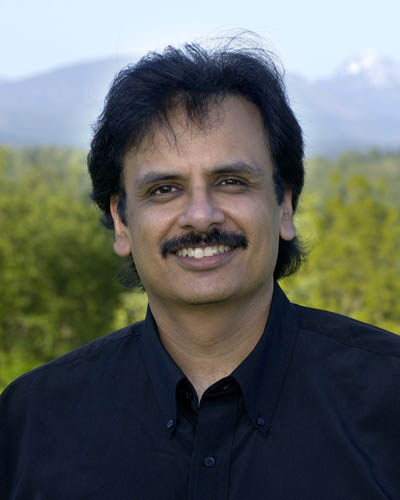 Victor Bahl
is a Principal Researcher and founding manager of the Networking
Research Group in in Microsoft Research. He is responsible for
directing research activities that push the state-of-art in the
networking of devices and systems. He and his group build
proof-of-concept systems, engage with academia, publish papers in
prestigious conference, publish software for the research community,
and work with product groups to influence Microsoft's products. His
personal research interests are in wireless systems and mobile
networking. In addition to building several seminal systems, he has
authored over 75 papers and 70 patent applications (45 have
issued). Dr. Bahl is the founder and past-Chair of ACM
SIGMOBILE ; the founder and past Editor-in-Chief of ACM Mobile
Computing and Communications Review, and the founder and steering
committee chair of ACM/USENIX Mobile Systems Conference (MobiSys)
Conference; he serves and has served on the Steering Committee of IEEE
DySPAN, IEEE COMSWARE, IEEE ISWCS, IEEE ISWC, ACM SenSys, ACM MobiCom,
and on the Technical Program Committee of over 60 international
conferences and workshops. He has served on the board of six IEEE
and ACM journals and on several National Science Foundation and
National Research Council panels. He has served as the General Chairman
of ACM SIGCOMM 2008, IEEE ISWCS 2007, IEEE COMSWARE 2006, and ACM
MobiCom 1999; as Program Chair of IEEE Symposium on Wearable Computers,
IEEE Wireless Mobile Multimedia and ACM Vehicular Ad Hoc Networks. In
2006, he was nominated by Microsoft for Intellectual Property Owners
Association's National Inventor of the Year Award. He received
Digital's prestigious Doctoral Engineering Award (1995-97) and ACM
SIGMOBILE's Distinguished Service Award (2001). In 2003, he became an
ACM Fellow for "Contributions to wireless communication systems, and
leadership in the mobile computing and communications community".� He
is an IEEE Communication Society's 2007-09 Distinguished Lecturer; an
ACM Distinguished Speaker (2007-08),and has served as the
president of the electrical engineering honor society Eta Kappa Nu-Zeta
Pi. Prior to joining Microsoft, he was with Digital (1998-97)
where he shipped several seminal multimedia products. He received his
PhD from the University of Massachusetts, Amherst in 1997. Victor Bahl
is a Principal Researcher and founding manager of the Networking
Research Group in in Microsoft Research. He is responsible for
directing research activities that push the state-of-art in the
networking of devices and systems. He and his group build
proof-of-concept systems, engage with academia, publish papers in
prestigious conference, publish software for the research community,
and work with product groups to influence Microsoft's products. His
personal research interests are in wireless systems and mobile
networking. In addition to building several seminal systems, he has
authored over 75 papers and 70 patent applications (45 have
issued). Dr. Bahl is the founder and past-Chair of ACM
SIGMOBILE ; the founder and past Editor-in-Chief of ACM Mobile
Computing and Communications Review, and the founder and steering
committee chair of ACM/USENIX Mobile Systems Conference (MobiSys)
Conference; he serves and has served on the Steering Committee of IEEE
DySPAN, IEEE COMSWARE, IEEE ISWCS, IEEE ISWC, ACM SenSys, ACM MobiCom,
and on the Technical Program Committee of over 60 international
conferences and workshops. He has served on the board of six IEEE
and ACM journals and on several National Science Foundation and
National Research Council panels. He has served as the General Chairman
of ACM SIGCOMM 2008, IEEE ISWCS 2007, IEEE COMSWARE 2006, and ACM
MobiCom 1999; as Program Chair of IEEE Symposium on Wearable Computers,
IEEE Wireless Mobile Multimedia and ACM Vehicular Ad Hoc Networks. In
2006, he was nominated by Microsoft for Intellectual Property Owners
Association's National Inventor of the Year Award. He received
Digital's prestigious Doctoral Engineering Award (1995-97) and ACM
SIGMOBILE's Distinguished Service Award (2001). In 2003, he became an
ACM Fellow for "Contributions to wireless communication systems, and
leadership in the mobile computing and communications community".� He
is an IEEE Communication Society's 2007-09 Distinguished Lecturer; an
ACM Distinguished Speaker (2007-08),and has served as the
president of the electrical engineering honor society Eta Kappa Nu-Zeta
Pi. Prior to joining Microsoft, he was with Digital (1998-97)
where he shipped several seminal multimedia products. He received his
PhD from the University of Massachusetts, Amherst in 1997. |
|
| Ralf R. Müller |
Professor
Department of Electronics and Telecommunications
Norwegian University of Science and Technology |
|
 Ralf R. Müller received the
Dipl.-Ing. and Dr.-Ing. degree with distinction from University of
Erlangen-Nuremberg in 1996 and 1999, respectively. From 2000 to 2004,
he directed a research group at Forschungszentrum Telekommunikation
Wien (ViennaTelecommunicationsResearchCenter) in Vienna, Austria and
taught as an adjunct professor at Vienna University of Technology.
Since 2005 he has been a full professor at the Department of
Electronics and Telecommunications at the Norwegian University of
Science and Technology (NTNU) in Trondheim, Norway. He held visiting
appointments at Princeton University, U.S.A., Institute Esurecom,
France, the University of Melbourne, Australia, The University of Oulu,
Finland, The National University of Singapore, and
Babes-BolyaiUniversity, Cluj-Napoca, Romania. Dr. Müller received
the Leonard G. Abraham Prize (jointly with Sergio Verdú) for the
paper ¡±Design and Analysis of Low-Complexity Interference
Mitigation on Vector Channels¡± from the IEEE
Communications Society. He was presented awards for his dissertation
¡±Power and Bandwidth Efficiency of Multiuser Systems with
Random Spreading¡± by the Vodafone Foundation for Mobile
Communications and the German Information Technology Society (ITG).
Moreover, he received the ITG award for the paper ¡±A
Random Matrix Model for Communication Via Antenna Arrays¡±
as well as the Philipp-Reis Award (jointly with Robert Fischer). Dr.
Müller has published some 100 papers on multiuser communications
in international journals and conferences and served as an associate
editor for the IEEE Transactions on Information Theory from 2003 to
2006. Ralf R. Müller received the
Dipl.-Ing. and Dr.-Ing. degree with distinction from University of
Erlangen-Nuremberg in 1996 and 1999, respectively. From 2000 to 2004,
he directed a research group at Forschungszentrum Telekommunikation
Wien (ViennaTelecommunicationsResearchCenter) in Vienna, Austria and
taught as an adjunct professor at Vienna University of Technology.
Since 2005 he has been a full professor at the Department of
Electronics and Telecommunications at the Norwegian University of
Science and Technology (NTNU) in Trondheim, Norway. He held visiting
appointments at Princeton University, U.S.A., Institute Esurecom,
France, the University of Melbourne, Australia, The University of Oulu,
Finland, The National University of Singapore, and
Babes-BolyaiUniversity, Cluj-Napoca, Romania. Dr. Müller received
the Leonard G. Abraham Prize (jointly with Sergio Verdú) for the
paper ¡±Design and Analysis of Low-Complexity Interference
Mitigation on Vector Channels¡± from the IEEE
Communications Society. He was presented awards for his dissertation
¡±Power and Bandwidth Efficiency of Multiuser Systems with
Random Spreading¡± by the Vodafone Foundation for Mobile
Communications and the German Information Technology Society (ITG).
Moreover, he received the ITG award for the paper ¡±A
Random Matrix Model for Communication Via Antenna Arrays¡±
as well as the Philipp-Reis Award (jointly with Robert Fischer). Dr.
Müller has published some 100 papers on multiuser communications
in international journals and conferences and served as an associate
editor for the IEEE Transactions on Information Theory from 2003 to
2006.
|
|
|










 Home
Home Call for Papers
Call for Papers Committee
Committee Submission
Submission Instructions for Authors
Instructions for Authors Important Dates
Important Dates Sponsors
Sponsors Program
Program Keynotes and Panel
Keynotes and Panel Tutorials
Tutorials Registration
Registration Social Events
Social Events Hotel Arrangement
Hotel Arrangement Conference Venue
Conference Venue About Trondheim
About Trondheim Previous ISWCS
Previous ISWCS